
Trimble Viewpoint makes year-end processing easy for its clients.
Did you miss our previous article…
https://www.cmcconstruction.net/?p=1690


Trimble Viewpoint makes year-end processing easy for its clients.
Did you miss our previous article…
https://www.cmcconstruction.net/?p=1690


In a first-time collaboration Autodesk (NASDAQ: ADSK), Australian Constructors Association, Consult Australia and the Infrastructure Sustainability Council have released a joint report to support industry in accelerating a net zero future through the design and construction of the infrastructure pipeline.
The report, A net-zero future delivered through our infrastructure pipeline, signals that a whole-of-business, systems-based approach across asset lifecycles is required to accelerate the journey to net zero. This includes pulling key levers such as procurement, materials, methodologies, technology and people capability.
Jon Davies, Chief Executive Officer, Australian Constructors Association said, “The record investment in infrastructure creates opportunities for the construction industry to be part of the solution to net zero.
“We all have a role to play, and it must be performed in partnership. The report sets out the options and enablers for government and industry to use in mapping the path to low-carbon, climate-resilient infrastructure,” said Mr Davies.
Although the industry has a significant footprint it has already started to demonstrate the influence it can have on the reduction of emissions said Ainsley Simpson, CEO, Infrastructure Sustainability Council.
“The 24 As-Built Projects certified over the last four years by the Infrastructure Sustainability Rating Scheme reduced their whole of lifecyle emissions by 26.5 million tonnes of CO2e, which is equivalent to the 26 CO2e saved by the whole Australian economy in 2020,” said Ms Simpson.
There are many tools identified in the report which also map key enabling levers against asset lifecycle phase, as well as a net-zero delivery model to prompt and guide decision-making – from rethinking and redefining problems and solutions through to reducing carbon intensive materials and ensuring regenerative approaches are integrated in asset design and construction.
The report also presents real-world case studies to inspire project teams to utilise, adapt, scale and accelerate further innovation. Technology is also identified as a key enabler of decarbonisation.
Andy Cunningham, ANZ Regional Director, Autodesk, said technology supports the infrastructure industry with the tools they need to unlock insights, make better decisions, and achieve superior outcomes.
“Software helps automate complex processes and transform data into actionable insights that empower innovators to improve the impact of everything they design, make, own, and operate. Cloud solutions and connected data environments fuel innovation—across technology, processes, supply chains, and industries. This opportunity is only accelerating,” said Mr Cunningham.
The release of the framework follows the COP26 climate talks which called for accelerated decarbonisation before 2030 to keep global temperature within 2-degree limits, and preferably to 1.5 degrees.
“Strong leadership and collaboration across the industry is going to be required to achieve accelerated net zero and keep our sector globally competitive,’’ said Nicola Grayson, CEO of Consult Australia.
“Net zero is a shared responsibility. Through the collective members of the Australian Constructors Association, Consult Australia and the Infrastructure Sustainability Council, in collaboration with Autodesk, we are committed to working with industry and government stakeholders to drive the continuous improvement required to achieve this shared outcome. We look forward to working together to take action at scale and at pace,’’ concluded Ms Grayson.
The report is available for download here.
The post ANZ Infrastructure Industry Well-Positioned to Meet 2030 Benchmarks and Achieve Net Zero by 2050 appeared first on Digital Builder.
Did you miss our previous article…
https://www.cmcconstruction.net/?p=1687


We’re a little over a year and a half into the COVID-19 pandemic and the construction industry, like many other industries, is maneuvering several obstacles on its road to recovery. I think it’s important that we take time to understand what this means in the immediate and for the long-term.
![]()
Did you miss our previous article…
https://www.cmcconstruction.net/?p=1683


The DJI, S&P 500, NASDAQ, and TSX have been setting new record highs in each successive month on a regular basis since the early days of the pandemic. Nor did November fail to deliver success on that score once again. In the latest month, new peaks were established by the four major indices.
![]()
Did you miss our previous article…
https://www.cmcconstruction.net/?p=1679

Construction industry statistics and data are increasingly important as they help accelerate decision-making on and off the construction site.
Seventy-five percent of global construction industry stakeholders agree or strongly agree that the need for real-time decision-making is increasing at the project level. Data is the secret sauce to making those decisions quickly and strategically. It provides contextual information needed to move projects forward in the short term while offering a competitive advantage long-term.
And while project data is ideal for decisions in the present, relevant industry statistics can light a path in the dark for future decisions. Industry trends, both near and farsighted, are likely to impact your approach to preconstruction, technology investments, sustainability, risk analysis, workforce planning, budgeting, operational efficiency, and the list goes on. Add to that the compounding effect of the Covid-19 pandemic, which has served as both a significant challenge and powerful catalyst for growth in digital collaboration.
With these factors in mind, we’ve compiled a list of essential EMEA construction industry stats to help you better understand the landscape. These data points portray the current state of affairs while also forecasting what’s to come. We cover a several major themes, and if you’d like to dive deeper, we’ve also included to each of our sources so you can explore further.
These construction industry stats provide insight into:
See statistics by topic:
General Outlook
Operational Challenges
Sustainability Efforts
Workforce Statistics
Rise of Technology

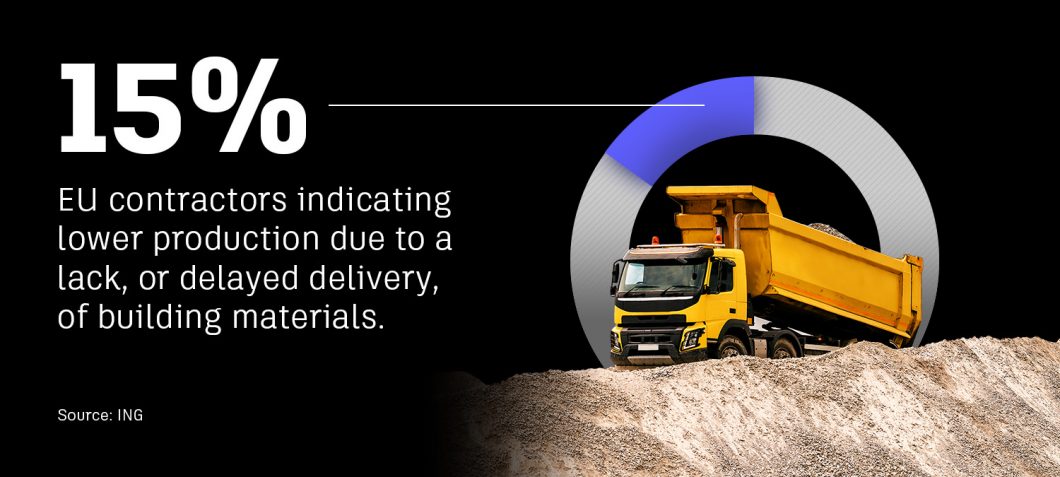
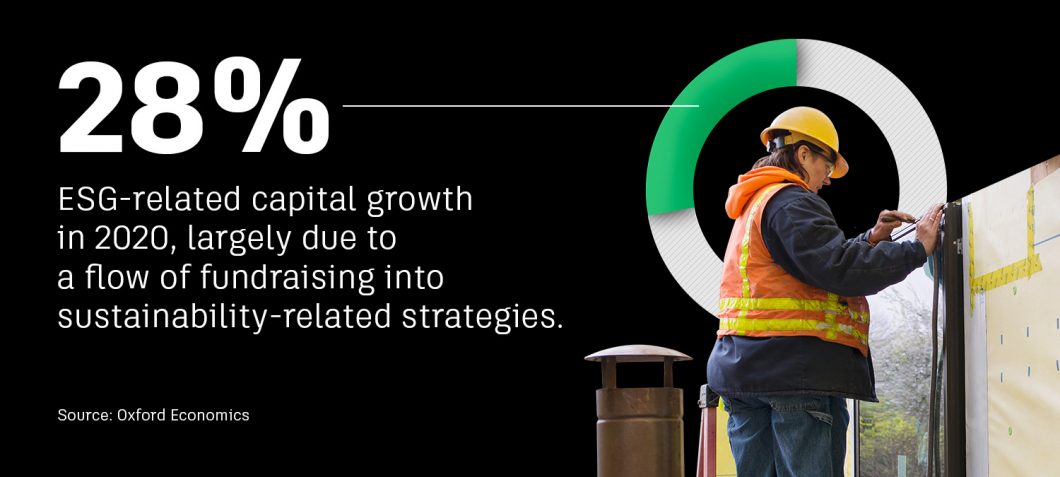
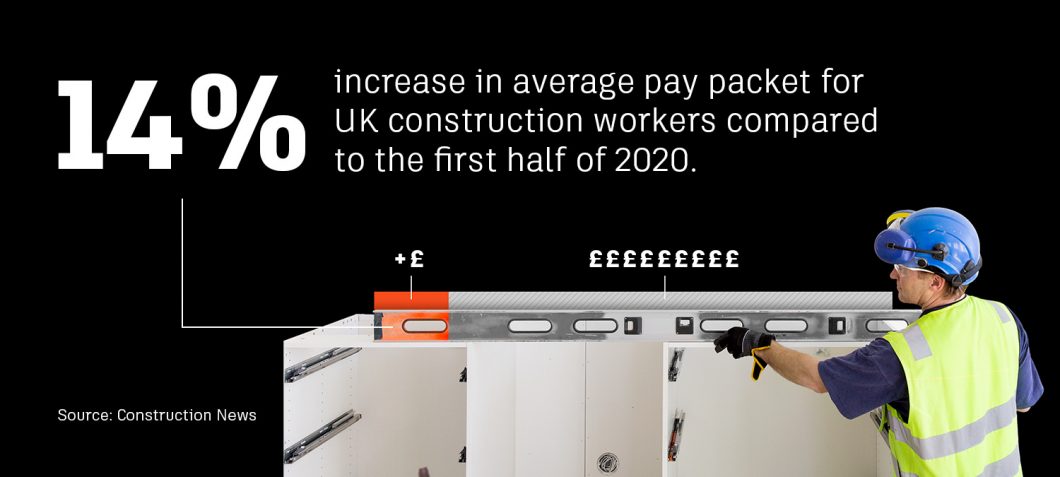

*currency conversions provided by Morningstar via Google on 12 November, 2021
As these 30+ statistics have demonstrated, the industry will continue to experience big changes and developments. It’s the perfect time for construction firms to tap into that momentum and reap the benefits of taking a more strategic approach to data. To begin, benchmark your current construction process with our free assessment.
MEASURE NOW
The post 30+ Construction Industry Statistics for EMEA appeared first on Digital Builder.
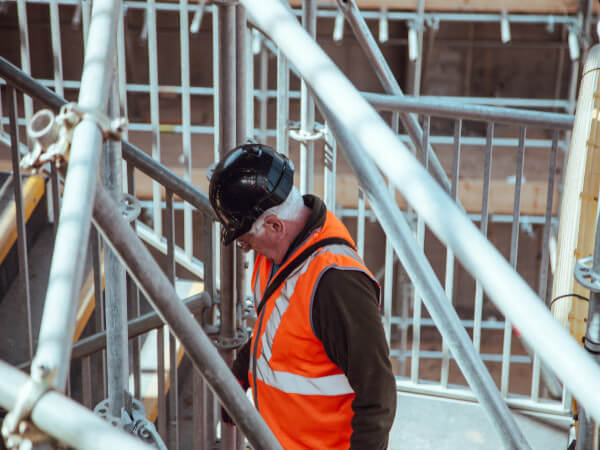
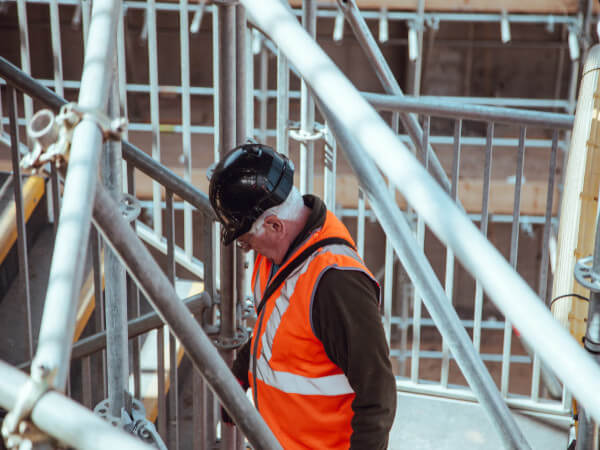
The accompanying table records the 10 largest construction project starts in Canada in September 2021. Also included is the latest trend graph on starts. This looks at 12-month moving totals of the civil and nonresidential building categories in Canada.
![]()
Did you miss our previous article…
https://www.cmcconstruction.net/?p=1668


Fewer cost overruns, fewer missed schedules, fewer safety incidents – the benefits of using quality data to inform decisions in construction projects are many.
“We are using project data to alert us to things before a problem arises,” one BIM coordinator surveyed for Autodesk Construction Cloud’s recently released global report Harnessing The Data Advantage In Construction told us.
“For example, we can track the number of encountered defects. We know once they exceed a certain number the schedule is going to be delayed. Having these insights allows us to address things when we can still do something about them.”
Our research found the construction industry is collecting more data than ever before but many are struggling to translate raw data into actionable insight.
In many cases, what is missing is the clear overarching data strategy, encompassing how data is collected, analysed and acted on.
Bad data has clear costs – our research found it caused 40% of the average construction firm’s poor decisions. Despite this, many of the more than 3,900 construction industry professionals we interviewed listed multiple roadblocks to establishing a formal data strategy.
Of those without one, the chief reasons why were:
So, how can the motivation and momentum needed to better harness data be built?
As useful as knowing where your destination is, it doesn’t mean anything if you don’t also know where you currently are. That’s why a good place to start is with a software audit.
When we speak with potential clients and ask what they’re doing with their current software and why, they often don’t know. It’s a ‘black box’, they tell us.
It’s difficult to compare what benefits a new approach would bring if it’s not clear how the current approach is functioning.
A basic software audit can give decision makers a better understanding of where they are at right now including what their systems are capable of doing, and how they’re being used. That, in itself, can be a revelation to many organisations as they start to map a smarter way forward.
Once an audit has been completed, processes can be benchmarked and compared against the concrete benefits of making a switch.
Next, a broad and diverse group of people from within and around the organisation should be convened to help guide the process. This group should represent all stakeholders and potential data users – including major suppliers and contractors.
Their first job is to come together with decision makers to discuss how they currently make decisions and where their frustrations lie.
It’s important to consider even the little things that can introduce errors. One CIO, during the research for the Harnessing The Data Advantage In Construction report, told us, “When we started to review the quality of our data, we encountered no fewer than 20 different spellings for the same supplier.”
All of this gets in the way of developing data you can trust and base important decisions on.
At this stage, the group is in a discovery period, learning from each other the benefits to be had from a smart data strategy.
The outcome here should be a clear understanding and prioritisation of the data categories and data capabilities that could alleviate the issues identified.
It’s normal for a project manager to understand where a specific project is at. But it’s rare for a business executive to have the confidence to say they know for sure that a specific project is on schedule, on budget, has particular challenges that need to be solved, etc.
Executives in businesses that have smart data strategies can say this, and much more.
Data-driven systems offer such powerful insights that it can be quite a mental leap to imagine their business uses. Many organisations continue to discover new and exciting use cases for their data years after the system has been implemented.
First and foremost, it’s vital to develop buy-in. This means teams and individuals at all levels should be able to fully appreciate how a data strategy will make their jobs better, and make them better at their jobs.
“You have to take a human-centric approach,” a Senior Digital Delivery Manager told us. “You have to show them that you are reducing the amount of time wasted for them personally.
“If you are cutting down on their work by reducing time spent on administrative tasks, people are more likely to make the transformation.”
Building a wall begins with putting a single brick in place, not placing all the bricks in a single movement. The same principle applies to instituting a successful data strategy. A successful pilot project will demonstrate the benefits better than any PowerPoint deck.
By focusing on the project data that you know can bring the most value to the business, you will be able to demonstrate results and return on investment quickly. And good data platforms are modular and easy to integrate, meaning elements can be introduced one at a time.
Best practice is not to change anything mid-project. Start with a new project and compare results with another project that is still using traditional methods. The more clearly you can quantify the benefits, the smoother the introduction of a full data strategy will be.
It is vital for the future of many organisations that a strong business case is created.
Up against challenges such as the labour shortage, ever more aggressive schedules, greater quality assurance expectations, more competitive bidding processes, sustainability pressures and more, the insight offered by a strong data strategy is a powerful driver of performance.
To learn more about how your competitors are making use of data, download the Autodesk/FMI Harnessing The Data Advantage In Construction report.
The post How to Build a Business Case for a Better Data Strategy appeared first on Digital Builder.

Based in Holland and founded in 1990, Alkondor engineers and produces façades, windows and doors, particularly for large and complex projects. The team work on a host of construction projects from residential to non-residential buildings, like hotels and cinemas, and have specialist expertise with complex architecture programmes.
With their own production facility in the Netherlands, 150 employees support Alkondor’s activity including Chris Schoneveld, BIM Manager and Bram Kotter, CEO. When Chris joined the team five years ago, his remit was to focus on all of Alkondor’s digital processes, including how the team can use digital solutions for better insights and modernise their ways of working.
At the time, the team used many time-consuming processes which included printing physical copies of PDF documents and delivering them between departments and to the factory manually. This meant that there was a layer of risk added to projects – working in such manual ways mean newer versions of drawings were again hand-delivered to production teams in the factory. “It was very easy for things to go wrong,” reflects Chris. “We were working in a way that was open for errors and meant there was a lot of work for everyone; we used Excel forms, handwritten notes, PDFs and spent a lot of time transferring and tracking documents.”
With all documents stored on local servers, soon the team recognised they began to have issues with different naming conventions on drawings and poor practices led to miscommunication and confusion. “It would be difficult to search between different documents,” says Chris. Alkondor decided that they needed to change the way they in which they managed their documents and knew that investment in their digital processes would help them be more efficient and collaborative when it came to working on their projects.
“We were already using some digital products such as Revit,” reflects Bram. “We were working with ITANNEX (Arkance systems), an Autodesk reseller, who introduced us to Autodesk Construction Cloud’s BIM 360 platform.” Alkondor began trialling BIM 360 to see how the functionality could support the team with their document management activities as well as supporting version controlling and issues management.
To start with, Alkondor undertook a pilot project with a small group who trialled using BIM 360. The pilot group tested how the team could share documents and data from Autodesk’s Revit platform straight into BIM 360, but they also tested other functionality like quality control and issues management.

After an initial trial, Alkondor decided that they wanted to roll out BIM 360 across all of the organisation and provide dedicated training to their team to ensure this investment was firmly embedded in the company’s ways of working. Bram introduced the solution during learning sessions for all employees, with Chris taking colleagues through the features and functionality. Chris also ensured he was available on site so the team using the solution were able to ask questions and troubleshoot collaboratively.
“I think the best features we have found in BIM 360 is the quality elements we can derive. We can document and freeze elements at certain points during construction,” says Chris. “This means we can complete extra quality checks which avoid extra costs that could be incurred to our products we install on site.”
The team use Ipads on construction sites and in the factory where they can access BIM 360. They use digital checklists for quality checks, and this also means they reduce the amount of paper used, ensuring Alkondor’s carbon footprint remains as low as possible.
Having digital document management practices means that all Alkondor team members can find documents quickly and easily using Autodesk Construction Cloud’s BIM 360 platform. “Being able to search and find documents easily saves a lot of time,” says Chris. “We can also see version history and there is a clear audit trail when it comes to changes.”
When it comes to learnings on each project, Alkondor use BIM 360 to capture insights on the progress of their projects to provide greater certainty. Chris remarks: “We have integrated PowerBI with BIM 360 so we can visualise our data and improve outcomes. We use PowerBI and BIM 360 to provide detailed information about the project’s progress. Sometimes we adjust production and engineering processes where necessary to ensure there is no disruption to our projects.” For project managers at Alkondor, this provides them with an overview of each project helping them to make more informed decisions.
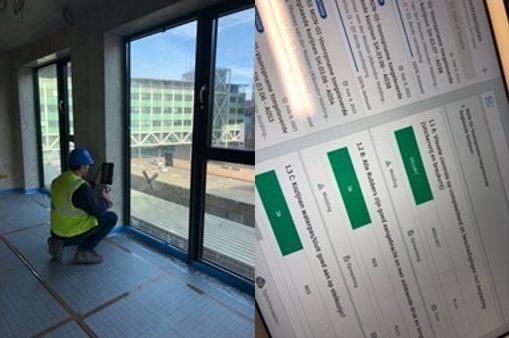
For Alkondor, quality is underpinned by their use of BIM 360. “All of our windows and doors are digital assets within the BIM 360 asset module,” says Bram. The team use this module to track the progress from their factory to project handover. “We add quality checks during the different stages of production and element mounting,” says Bram. “We can visualise our asset progress again using PowerBI dashboard updates with the help of Autodesk’s data connector. This updates every two hours and provides valuable information to our managers,” says Bram.
The team managers in the production area can review both data and issues using this functionality. This means that communication between the production and preparation departments are much more streamlined.
“Things are much quicker and time isn’t lost waiting on information,” – Chris Schoneveld, BIM Manager, Alkondor
“For example, colleagues in the production areas can attach issues to drawings to ensure the right materials are being ordered. This can all happen in BIM 360 with ease.”
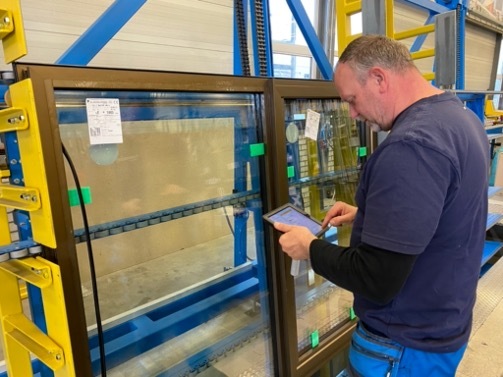
This also means the teams have much more insight into what is going wrong and what can be done to change it. When it comes to Alkondor’s use of BIM 360, the company are embedding its use more and more. The team have used BIM 360 on 197 projects, documented 13810 issues and created 17500 checklists as well as 10500 assets.
For Alkondor, having meaningful data available to analyse is significant. Chris reflects: “We have data and dashboards to make it immediately visible. Previously, we couldn’t analyse anything, but now we can use BIM 360 to analyse everything.” When it comes to using this data, it is invaluable to be able to document and capture the quality of products at a moment in time. “In the past, we were unable to confirm with our clients that there weren’t any scratches on door panes, broken glass or concrete stripes. So if there was a defect afterwards, customers could blame us and ask to front the costs for solving it,” says Chris. Now, Alkondor has evidence of the quality of their outputs on a set date. Which is stored in BIM 360. Depending on the project, that could save somewhere between 10,000 euros to 100,000 euros.
In the future, the team is looking to add in sensor data, so that the business can offer services like predictive maintenance. As an example, they could use this functionality to identify that one door opens once a year, while another opens a thousand times a year. They could use that data to inform predictive maintenance schedules.
For Alkondor, embracing technology of the future like the use of robotics in their factories means they will enable their workforce to focus on higher value and complex work. Being able to offer data to their customers also means that they can be more transparent and provide information that will help their customer to better manage the asset in the future.
“We are committed to embracing technology today so that we can use it for the better in the future,” says Bram. “This also means we can be more flexible as a company – for example pivoting our market offering from projects to ongoing services which will provide us with more revenue streams to explore. And at the heart of all of this for Alkondor is using their data for the better.
The post Data-Driven Insights Improving Quality With Alkondor appeared first on Digital Builder.
Did you miss our previous article…
https://www.cmcconstruction.net/?p=1649


Over the last several years, we’ve seen a major shift in the ways project teams work together and the requirements that owners put on contractors. Design-Build project delivery, lean methodologies, and joint ventures are at an all-time high, and accelerated by digital adoption from at-home work and the Covid-19 pandemic. In fact, 58% of owners said they’ve used or plan to use design-build, moving away from traditional design-bid-build (FMI).
This could be, in large part, because design-build projects are completed 102% faster than traditional design-bid-build (DBIA). As construction teams move towards an integrated approach, organizations from Architecture-Engineering firms to contractors and trades will need to adapt their processes and adopt standard ways of working to better communicate and coordinate in dynamic environments.
The fundamentals of construction haven’t changed much over time. Schedule constraints, geometry conflicts, sequencing, safety, and quality will continue to challenge project teams and require the very best from problem-solvers in every organization. Firms that react to industry changes will improve on these fundamentals—helping them to save on unnecessary costs and capture back some time back in their day. Better collaboration across the project lifecycle will pad schedule margins, focus teams on delivering up-front quality, and provide leaders with the provable success history to win the right kind of work for their firm.
As competition for new work increases and governments apply more standards to the construction industry, firms must innovate or risk losing out on the right kind of projects for their portfolio. The challenge comes with “how” firms adapt and what paths they take to improve their delivery metrics. It can’t be enough to purchase the newest technology and call it a day. The real work comes with getting buy-in from project partners and unlocking the contributions from the entire team, from architects and BIM managers to subcontractors. This is especially important in the coordination process.
Today, much of the pre-coordination meeting work rests on the shoulders of a BIM manager. Models need to be sorted, uploaded, and aggregated. Navisworks is often a tool of choice to navigate models, check for clashes, and assign issues with views. Weekly coordination meetings pull together the shared expertise of the entire project team to assess issues and work together to troubleshoot and resolve issues generated by the BIM manager.
Oftentimes, however, these meetings focus too much on low priority issues—aligning models, resolving simple clashes among teams, and making sure previous decisions were executed correctly. Slow coordination among teams compresses the overall schedule, making clash resolved models more of a luxury in some cases.
Navisworks is one of the most trusted and powerful tools for refining models. Those who know it love it. And there are no indications this level of clash granularity is ever going away. But to keep up with moving deadlines and changing design elements, project teams need to find a hybrid approach to clash management; one where engineers, architects, and trades are taking part in a simplified and continuous model coordination process while the BIM Manager uses their expertise to focus on high value issues.
It’s not enough to throw a fresh coat of paint on the old way of managing clashes and repackage clash detection for BIM managers. A shift in mindset needs to occur that gets the whole team engaged in clash detection. Fundamentally, teams need to be collaborating throughout the week to identify, resolve, and even prevent issues from the earliest stages of a project. The value in doing so, is a better reputation for quality and timely work, less time spent on non-optimal activities, and more time spent on solving problems before they hit the field.
Clash detection must be simple enough for anyone to use it.
Clash detection then, must be simple enough for anyone to use it. It needs to automate repetitive tasks, reduce the set-up time to near zero, and work in-conjunction with the tools people use every day.
Autodesk BIM Collaborate does just that. Anyone on the project team can set up a coordination space in a common data environment, and when files are added or updated there, they are automatically clashed against the other models. Clashes are automatically grouped by object, property, system name, or type name, giving the clash novice or seasoned expert easy ways to locate types of clashes for clearing. A clash tolerance filter dynamically changes the clash list, reducing the noise and focusing individual users only on larger clashes. Clashes are arranged in a matrix so everyone is aware of the problem areas and BIM managers can focus on specific disciplines or floors.
More on the technical side, project stakeholders using third-party authoring applications for design who also want to see their files aggregated and clashed, can see their work in a multi-model context with intermediary file types like NWC or IFC. These files can be aggregated and clashed alongside RVT and DWG files.
Once a clash has been identified as an issue, it is automatically shared across the entire issue eco-system. If a design lead identifies an issue in BIM Collaborate, BIM managers in Navisworks and engineers in Revit can pick up that issue in either of those tools. The assigned issue is then tracked in each of the products, desktop or web based, throughout the system.
This allows teams to communicate about issues in the tools they use day-to-day. And with a direct link to the web from desktop applications like Revit, design teams can get a quick health check on their work in a multi-model context.
Navisworks users who need to investigate issues to determine next steps can see the highlighted clashes in context to fully understand it. If there’s any ambiguity, they can comment on an issue, which is then available in Revit, other Navisworks applications, Autodesk Docs, Autodesk Build, and Autodesk BIM Collaborate.
With this level of connectivity, multidisciplinary teams can now communicate early and often in one place, using a common data environment as a single source for project files. Removing the barriers between teams and allowing multiple stakeholders to clear clashes improves design quality and the speed of work done in preconstruction phases. When coordination timelines compress, and they often do, it’s important to have more eyes on the constructability of a project to ensure the quality owners expect and field partners need.
Being adaptable means having the right tools for the right job. And in a world where immediate access to data is a necessary component to achieving positive project outcomes, teams need their tools to connect to a common data environment. When authoring tools, powerful clash tools, simple clash tools, and issues are all connected in one place, the difficulties of a fast-moving design-build project are no longer technological. Organizations can prove their ability to act with innovation and can build a reputation as being collaborative and predictably successful.
If you’d like to learn more about Autodesk BIM Collaborate and what it can do for your business specifically, please contact us for a demo. We’d love to show you around.
The post How Clash Detection Evolved Into Everyone’s Tool appeared first on Digital Builder.
Did you miss our previous article…
https://www.cmcconstruction.net/?p=1638
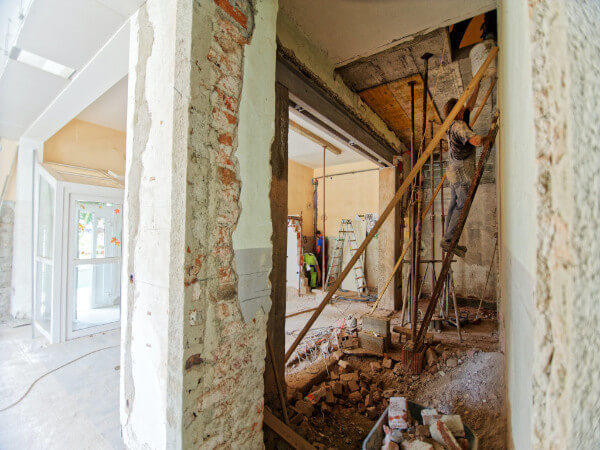
Jobsites aren’t the only loud places in construction; the ecosystem of construction technology produces a lot of noise too. It can be difficult to cut through what’s real, what’s hype, and what can actually help you improve how your team gets their work done. That’s partly why we decided to launch Autodesk’s Digital Builder podcast and share stories from ambitious leaders from across the construction industry.
On our podcast, we get into the corners of what works, what doesn’t, and what the future for the industry holds. To wrap up the year, I wanted to look back (in no particular order) at a few particularly interesting episodes from 2021.
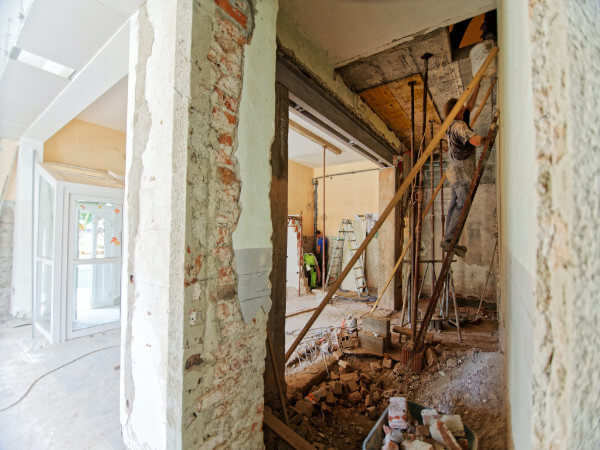
Working across upwards of twenty companies during a project is typical in the AEC industry. Each company usually has multiple people involved as stakeholders, each with their own prescriptions and priorities. The only way for a project to run smoothly is to prioritize communication and collaboration. For the best project outcomes, everyone must be on the same page.
Eddie Campbell, COO at ABSI (Accelerated Building Solutions, Inc.) and Tyler Campbell, Vice President, also at ABSI, are no strangers to the highs and lows of construction collaboration. The co-hosts of the Construction Brothers Podcast joined us to share best practices for increasing cooperation within projects.
You’ll learn actionable tips for:
Listen here: Apple Podcasts, Spotify, Stitcher, Google Podcasts, and anywhere else you listen.
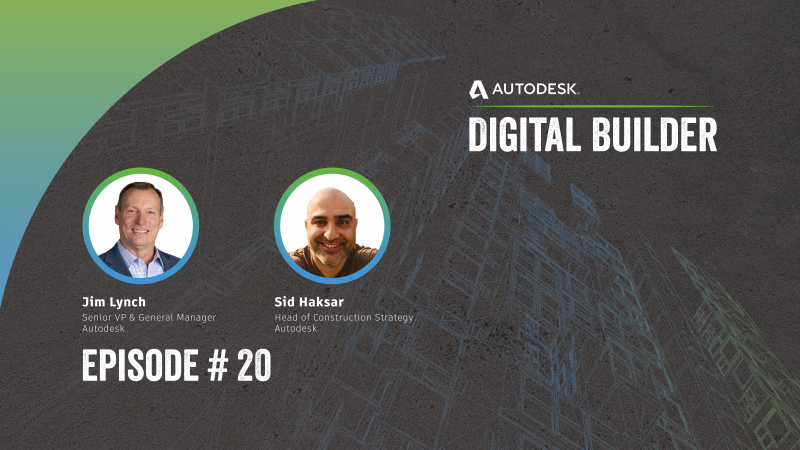
Spend any time listening to thought leaders discuss construction technology and you’ll undoubtedly hear the term “platform” come up. Understanding what to expect from a construction platform is the first step to getting the most out of the technology you use. A true platform should provide a single location for designers, engineers, and builders to harness data and tools from anywhere, at any time.
In the twentieth episode of the Digital Builder podcast, you’ll hear from Jim Lynch, Senior Vice President & General Manager, and Sid Haksar, Head of Construction Strategy, both with Autodesk, on what defines a true platform and how to make sure you select the right one. Jim and Sid share their most tried and true tips for evaluating construction platforms and technology.
You’ll also discover:
Listen here: Apple Podcasts, Spotify, Stitcher, Google Podcasts, and anywhere else you listen.
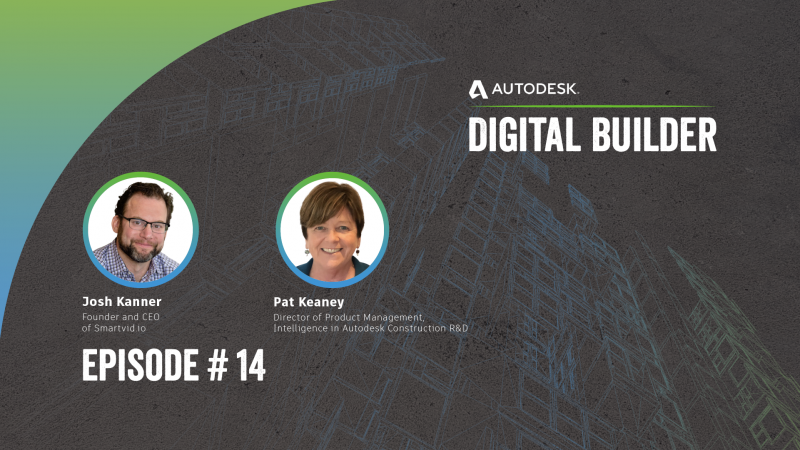
What comes to mind first when you think of Artificial Intelligence (AI) and Machine Learning (ML)? It isn’t uncommon to think of super-skilled robots and a loss of human touch in the workplace. But as you’ll discover in this episode of the Digital Builder podcast, AI and ML are key to improving the safety of jobsites, the productivity of teams, and institutional knowledge for construction firms.
Here to demystify the realm of AI & ML in construction are Josh Kanner, Founder and CEO of Newmetrix (formerly Smartvid.io) and Pat Keaney, Director of Product Management, Intelligence at Autodesk Construction R&D. Josh and Pat break down the two innovative technologies in an accessible way while sharing real-world examples of their practice.
You’ll walk away with a greater understanding of:
Listen here: Apple Podcasts, Spotify, Stitcher, Google Podcasts, and anywhere else you listen.
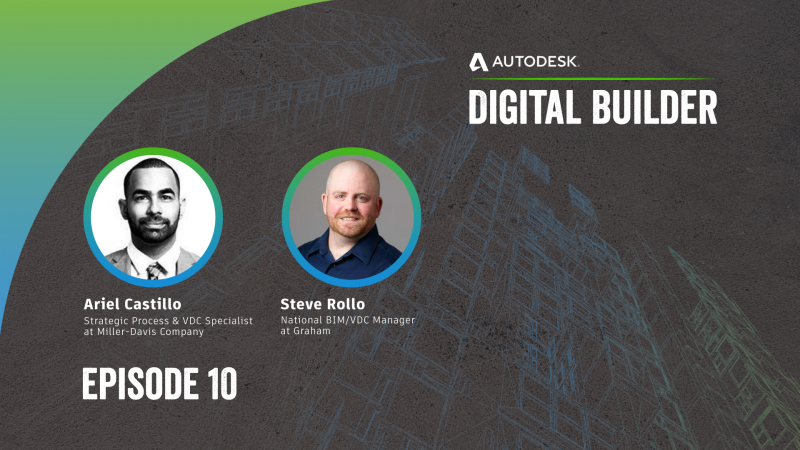
The adoption of Building Information Modeling (BIM) at an international level has as many opportunities as it does challenges. Many in the industry wonder when—if ever—we’ll reach a global standard for the process.
Ariel Castillo, Strategic Process & VDC Specialist at Miller-Davis Company, and Steve Rollo, National BIM/VDC Manager at Graham, explore these big ideas on episode 10 of the Digital Builder. As Ariel and Steve discuss the future of global BIM standardization, they’ll also share what BIM and Virtual Design & Construction (VDC) really mean. Expect to hear lots about the biggest challenges with rolling out new construction technologies as well.
Other points of conversation include:
Listen here: Apple Podcasts, Spotify, Stitcher, Google Podcasts, and anywhere else you listen.
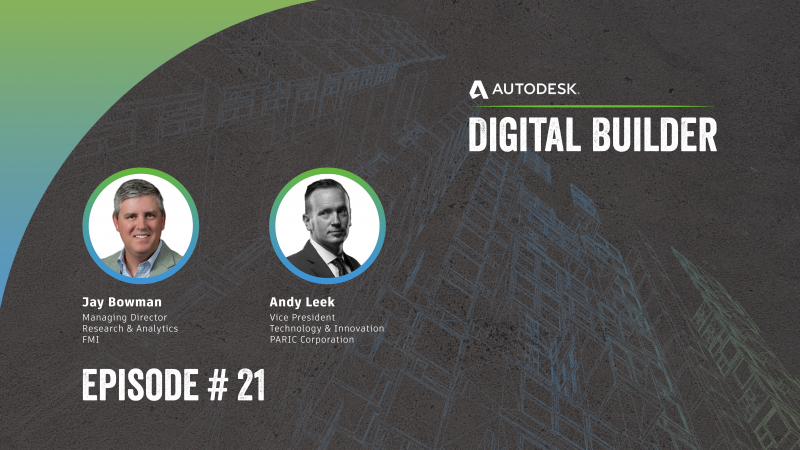
Making better decisions in modern construction often comes down to having the right data. Leading firms have fine-tuned strategies for data management so they can rapidly harness insights and leverage more advanced technologies further down the line.
Jay Bowman, Managing Director of Research & Analytics at FMI, and Andy Leek, Vice President – Technology & Innovation at PARIC Corporation, break down the benefits of strong data strategies in the twenty-first episode of the Digital Builder. If you’ve always wondered how to get started on building a robust data strategy, you won’t want to miss their gems of wisdom.
Learn from Jay and Andy about:
Listen here: Apple Podcasts, Spotify, Stitcher, Google Podcasts, and anywhere else you listen.
While we’ve highlighted five popular episodes to begin your listening journey with Autodesk’s Digital Builder podcast, feel free to binge the rest on your rides to and from work or the jobsite. Each episode is carefully curated to provide insights into the modern construction industry you just won’t find anywhere else. Don’t forget to share your favorite episodes and discuss with your team. A new episode drops every two weeks and you can subscribe on:
The post 5 Must-Hear Construction Podcast Episodes from 2021 appeared first on Digital Builder.